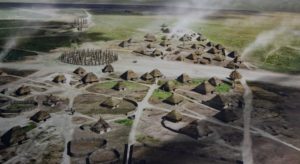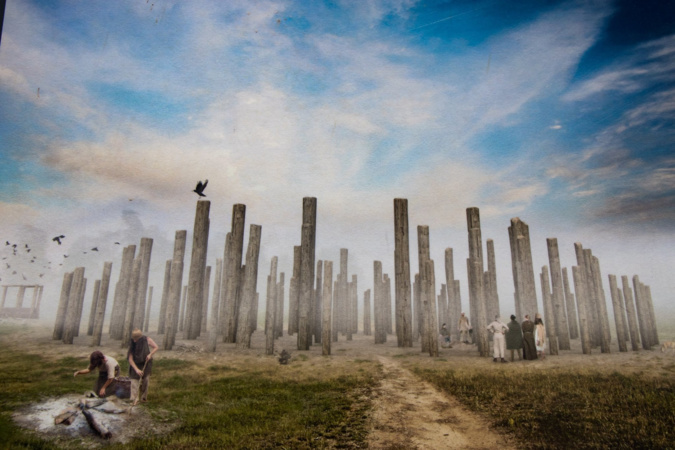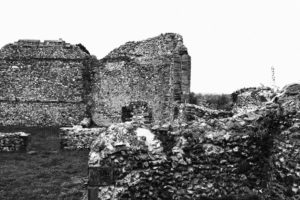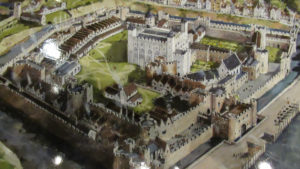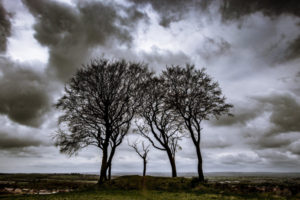Woodhenge – Neolithic henge and timber circle monument 2 miles north-east of Stonehenge, just north of the town of Amesbury. Pottery from the excavation was identified as being consistent with the grooved ware style of the middle Neolithic, although later Beaker sherds were also found. So, the structure was probably built during the period of cultural similarities commonly known as the Beaker. The Beaker culture spans both the Late Neolithic and Britain’s Early Bronze Age and includes both the distinctive “bell beaker” type ceramic vessels for which the cultural grouping is known as well as other local styles of pottery from the Late Neolithic and Early Bronze Age.
While construction of the timber monument was probably earlier, the ditch has been dated to between 2470 and 2000 BC, which would be about the same time as, or slightly later than, construction of the stone circle at Stonehenge. Radiocarbon dating of artifacts shows that the site was still in use around 1800 BC


